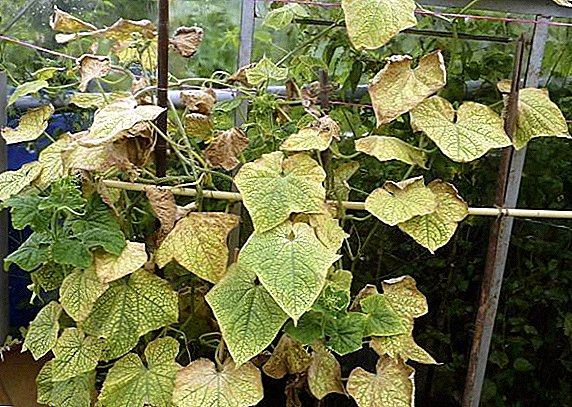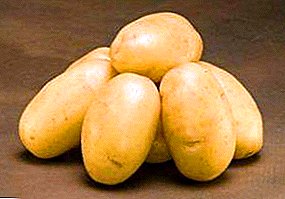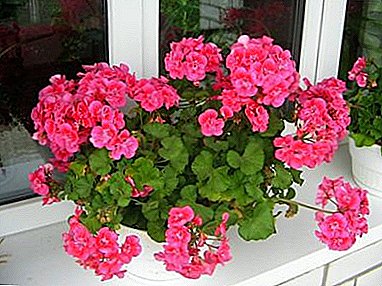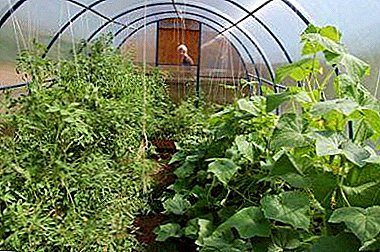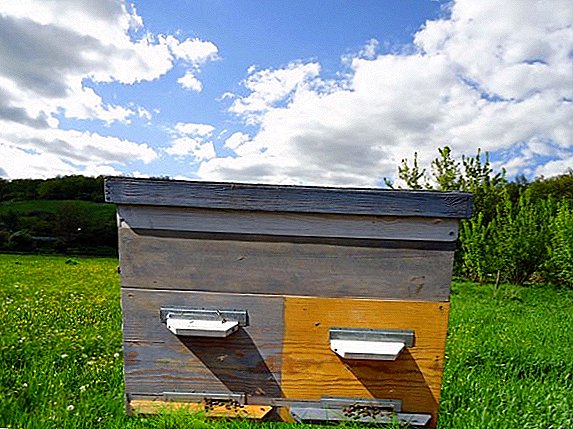 Almost all amateur beekeepers use hive designs given or its modifications. The name of the bee house was in honor of Charles Dadan -French beekeeper, who, using advanced developments for his time, invented the construction of a single-body hive with a large wide frame of quinby 11 in number and several shops on top. A successful invention began to use European beekeepers.
Almost all amateur beekeepers use hive designs given or its modifications. The name of the bee house was in honor of Charles Dadan -French beekeeper, who, using advanced developments for his time, invented the construction of a single-body hive with a large wide frame of quinby 11 in number and several shops on top. A successful invention began to use European beekeepers.
Swiss Blatt increased the number of frames to 12 and made the bee house more natural for bees and the uterus. The hive of Dadan-Blatt was upgraded to an almost modern species by another beekeeper - Edward Bertrand.
Description Dadanovsky house for bees
For convenience, modern models are called "Dadan's hive" or simply "dadan." They are not used in the industrial production of honey, but lovers give them preference, appreciating the small size of the single-case structure, which has an important advantage: special store extensions are used to store honey stocks. They are light and comfortable, twice the size of the case.
Important! Another important advantage is the ability to extract the framework with honey, rather than changing the body. An amateur beekeeper is able to cope with work alone, which indicates undoubted convenience.

The principle of working with the design is to remove from above the dwelling solid feed stocks of honey, taking out the frame with it, thereby stimulating the bees to restore the lost volumes, offering them for this purpose a new empty frame.
A bee colony can winter in one building, the dimensions of the hive allow it. However, in conditions of a protracted winter, bees need to be fed up, as they eat up their own supplies. Given the ease of use of the hive, the inconvenience is quite tolerable.
Did you know? The bee colony requires about 250 kilograms of honey to feed each year. When it is not enough, worker bees, sacrificing themselves, die before the shortage becomes critical and the uterus suffers in some way damage.

The use of a beehive is given in a suitable manner during moderate honey collections using shops, as well as during a good bribe, with the installation of sections equivalent to a nested body.
Dadan has the standard dimensions: 450 x 450. The walls are made of 37-millimeter boards with the exception of the podshnishnika and the roof. Visually from the outside, the design has dimensions 524 x 524.
Different types of dadans number of frames. In Soviet times, they were the most common throughout the Union.
If you want to get a valuable bee product - wax from various wax raw materials, then read how to make a solar wax refinery with your own hands.
Main types
All kinds of hive dadan models are widely used, their production is adjusted and in demand. The most popular ones are ten and twelve frame modifications.
They are commercially available and easy to manufacture. An amateur beekeeper is able to make a hive with his own hands after learning technology.
Did you know? It will turn out from a larva a uterus or a working bee, depends on a diet. A certain composition of the feed allows the genitals to develop in the future uterus.
10-frame

The hive is given a 10-frame less dimension than its 12-frame "colleague." Being a dadan, he looks like a rutovsky hive. This is true for beekeepers working with different designs on the same apiary. So, both systems have common interchangeable elements. We are talking about roofs, bottoms, shops, honey half-frames. Fewer parts that are not used - more storage space is in demand.
The drawings of the 12- and 10-frame dadans are almost identical, except for the dimensions of the rear and front walls of the case, as well as the store. There is an opinion that this is a rutovsky hive modified under the Dadanov frame. All designs have a common and main element - a frame, the size of a shop half-frame is shortened from 300 to 145 millimeters.
Dadan 10 frames has a smaller volume, which makes it easier, and therefore more mobile. It is convenient to use it on nomads, especially where there is a small bribe, for example, when going to the mountains to collect chestnut honey.
12-frame

Beehive given 12 frames most demanded by beekeepers. It is a square case with several store extensions, a roof, a roof plate and a bottom - deaf or detachable. The fastening between the body and the extensions is applied fold. The case accommodates 12 standard frames with dimensions of 435 x 300 millimeters. Each store extension holds the same half-frame of 435 x 145 millimeters. There are still two diaphragms.
Inside they must conform to the standard sizes, outside (depending on the thickness of the boards) may vary in size.
Honey is far from the only value that a person receives due to bees. Beekeeping products such as pollen, bee venom, wax, propolis, podmor, drone milk have also been applied.
How to make a beehive Dadan yourself
There are people who prefer hand-made products to purchased designs. These are real enthusiasts, lovers of their work, they appreciate what they have and are ready to improve everything to the best of their ability.
Making hive dadan is not difficult for such craftsmen. They are required tools, materials, hands and inspiration. 
Did you know? Each hive has an individual smell, a particle of which, like a key, the bee stores in a designated part of the body and presents it to the guards upon arrival. It is impossible for a bee with a strange smell to penetrate the dwelling.
Material preparation
The life of the house for bees should not be less than ten years. It is possible to extend it by complying with the rules:
- The use of quality materials;
- Proper processing and assembly of parts;
- Periodic (once in 2-3 years) coloration of bee habitat.

A suitable hive is obtained from the following conifers:
- Fir;
- Ate;
- Shallow pine;
- Cedar.
The wood should be dried, moisture should not exceed 15%, should be straight-layered, not have wormholes, cracks and redness, preferably without knots. 
Important! If the presence of a knot could not be avoided, it should at least be small, healthy, tightly adhered to the wood and not located on the edge of the part. A rotten knot or dropout should be drilled out, tightly sealed with stoppers using waterproof glue. Cork made from the same wood.
What you need for making the frame and the hive
For the framework you need to prepare:
- Hammer;
- Steel wire;
- Pliers and nippers;
- Awl;
- Shoe nails;
- Dry thin billet stock.
To make a hive, you will need:
- Suitable wood;
- Glue for carpentry;
- Hammer;
- Few nails;
- A tin of paint;
- Joiner's machine;
- Clamp.

Step by Step instructions
Having the intention to build a hive with your own hands, you should acquire drawings, since this is a standard construction, and the success of the event will depend on the size.
The frame has unified sizes for all hives of the Dadanovsky design - 435 x 300 millimeters.
- Harvested dry slats should be joined using nails or glue. With the help of sewing, make holes in the side rails for threading the wire.
- Pull the wire through them, hold them together using pliers and an awl.
- Cut a loop through the last hole, secure the wire.
- Remove excess with pliers.
The frame can be used after the waxing procedure.
In the manufacture of the hive, you must clearly observe the dimensions indicated on the drawing. In the upper part in the center there is an oval-shaped entrance 10 x 12 cm. In front of it there is a flight board that protrudes 4-5 cm. The lower entrance is provided with a bolt and flight board. 
Step by Step instructions
- On the machine to process the wood, cut into boards, thickness - 37-40 millimeters;
- Cut the grooves for the connection between the walls;
- Cut slats 18 x 4 mm;
- Build a shield out of them using glue and a clamp;
- Assemble the case, fixing it with glue and nails;
- Paint the hive;
- Drill out years;
- Make several air vents 1.4 cm in diameter;
- The roof is constructed from a board 15 mm thick and after finishing the work is treated with a water-repellent coating.
- In the roof, too, drill a few holes.

Did you know? It is believed that bees give preference to purple, blue, yellow and green, but sympathy is determined not so much by color as by the presence of pollen and nectar.
Advantages and disadvantages of the design
Working with the dadanovsky hive has its own characteristics, some of which, under different circumstances, can be attributed to both advantages and disadvantages.
- It has a modest size, which, however, are good for the nomadic collection of honey. Removing the roof and tightening the top with a net, it is convenient to load such hives in two rows one above the other, shifting the bars for air circulation and, of course, carefully securing.
- Due to the fact that the housing is connected to the bottom, the hive has a sturdy construction.
- Has a volume sufficient for wintering.
- It has a slightly lower capacity when pumping compared to hull models.
- Beekeeper lovers can conveniently control the life of the bee family and respond to its needs when working with frames, while corpus work has great productivity, but does not have an individual approach.
- Some bulkiness of 12-frame dadans is compensated by the presence of 10-frame ones, if departure is necessary.
- Due to the constant employment of 12-frame frames, the process of rejection is impeded.
- It is difficult to provide bees for wintering framework, completely filled with honey, often have to offer partially filled.
- Too small for two bee colonies.
To create optimal conditions for the bees to breed and create delicious honey, read also how to make a beehive with your own hands.Each type of hive has virtues that have attracted admirers, and disadvantages that you have to put up with. The hive of Dadan-Blatt satisfies the needs of a small amateur apiary, easy to maintain even by one person and allows you to keep track of the bee family, filling her for the missing. This option is not for industrial scale, where it will be inefficient and unnecessarily time consuming.



